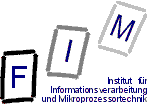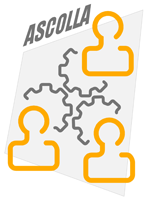Research
An overview of past and current work on:
- Adaptive systems,
- eLearning (this page), and
- Accessibility.
eLearning
I started working in this field when I first joined FIM, where we developed the WeLearn eLearning platform. You can get an overview of the platform there, test the system with guest accounts, and download the latest version for local installation. Also note that you can download a live-cd version of the platform (actually, a live linux cd, with the platform preinstalled for easy testing)! Last, but not least, this is also the place to go to if you are interested in any of the other great tools developed at FIM.
The Adaptive Learning Spaces and ASCOLLA projects, both deal with adaptivity in eLearning, so check them both out if you are interested in the topic.
Another notable area of recent work is the ITMath framework for algorithm visualisation.
» WeLearn
You can get a first-hand experience of the current version of WeLearn at: http://experience-weLearn.fim.uni-linz.ac.at. There you will find a sample configuration to get a first impression of what is possible. You can log in: (a) as a course "leader": Login: lehrer, Password: lehrer, (b) as "Bert" who participates in one course: Login: bert, Password: bert , or (c) as "Ernie" who participates in two courses: Login: ernie, Password: ernie. If you would like to test WeLearn with administrator permissions, then you can send an email to get your own personal account to: welearn@fim.uni-linz.ac.at.
The most important advantages of WeLearn, as compared to other similar platforms, are:
- Written in Java (servlet-based web application) and successfully deployed by our users on Windows and Linux.
- Does not require that a database be installed on the deployment system.
- Very flexible - it is possible to have entirely different settings to cater for the organisational requirements at hand.
- Very simple to use - a small set of well-understood interaction metaphors, and a "continuously-under-improvement" front end, make it possible even for novice users to use the system effectively.
WeLearn v.2.2, the next major release in this development line has been scheduled for the end of April. Watch this space for additional information on what's is being included in that version and screenshots of the upcoming release!
» ITMath
The development of E-Learning material is costly. It is estimated that good material requires investments from 10 up to 100 times those for a "conventional" course. One reason for this is the need for interactivity: Scanning a book and placing it online is in all but the most trivial cases insufficient for high quality eLearning courses. Although such an approach fails to take advantage of the new possibilities afforded by the deployment “medium”, like personalization and interactivity, it still constitutes an “entry point” into the creation of eLearning materials. As a consequence, a pattern often observed, at least at the university level, is that materials are not just created at once, but rather evolve over time: It starts with more conventional material and is expanded and enhanced over time through other kinds of media (audio, video) and more / better interactive ele-ments, e.g. applets or flash animations.
However, this evolutionary development process can result in several problems. Firstly, this process typically involves many persons in the design and authoring of materials, which almost invariably results in several different modes of interaction. Even when strict guide-lines are established, these can be interpreted differently and are perhaps not always followed exactly. Even more problematically, not all materials will adhere to the same didactic model, contain similar additional information (like general background or help pages) or support the same additional functionality (e.g. printing).
The ITMath framework was designed to prevent these (and other) problems. Our overarching goals in the development of the framework have been: (a) to instate uniform didactic and interactivity models in inter-active E-Learning examples; (b) to support the implemen-tation phase of such examples; (c) to foster and, where possible, enforce adherence to usability standards and guidelines; (d) to facilitate the deployment of examples in both on-line and off-line forms; and, (e) to ensure a high degree of reusability of the implemented examples, beyond the eLearning context they were originally in-tended for. From a didactical point of view, the intention has been to capitalize upon the possibility of standardizing best practices, by encapsulating much-used and proven didactical structures into what has been termed ‘software templates’.
The ITMath framework comprises mainly of a number of Java libraries and a build environment oriented towards concurrent applet- and application- mode de-ployment. It has already been used for implementing a large number of individual examples, which are in practical use in blended-learning courses our institute offers for its students. It has been described to some detail in this paper:
- Paramythis, A., Loidl, S., Mühlbacher, J.R., & Sonntag, M. (2005). A Framework for Uniformly Visualizing and Interacting with Algorithms. In Montgomerie, T.C., & Parker E-Learning, J.R. (Eds.), Proceedings of the IASTED Conference on Education and Technology (ICET 2005), Calgary, Alberta, Canada, 2-6 July 2005 (pp. 28 – 33). Calgary: ACTA Press.
To get a better feeling of the capbilities of the framework, you may want to have a look at the following screenshots, taken from a set of algorithms / features intended for an introductory, university-level course on mathematics for first-year computer-science students:







